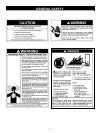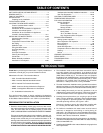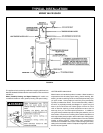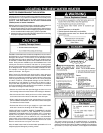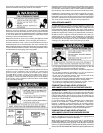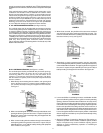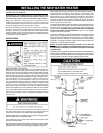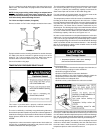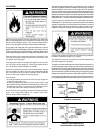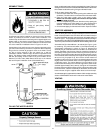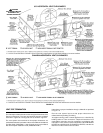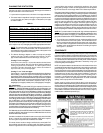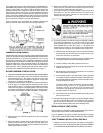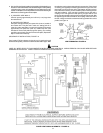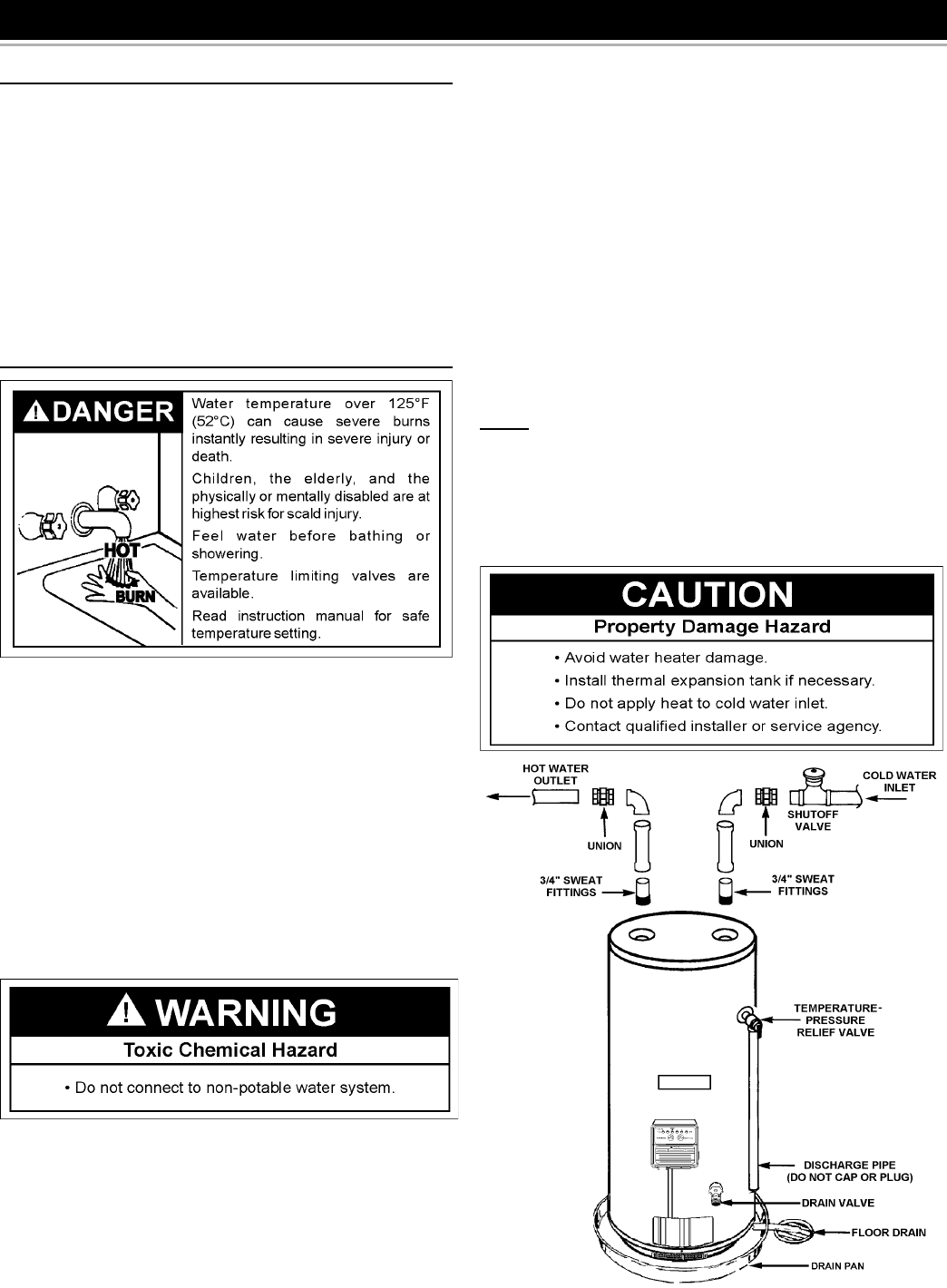
12
Water supply systems may, because of such events as high line pressure,
frequent cut-offs, the effects of water hammer among others, have
installed devices such as pressure reducing valves, check valves, back
flow preventers, etc. to control these types of problems. When these
devices are not equipped with an internal by-pass, and no other measures
are taken, the devices cause the water system to be closed. As water is
heated, it expands (thermal expansion) and closed systems do not allow
for the expansion of heated water.
The water within the water heater tank expands as it is heated and increases
the pressure of the water system. If the relieving point of the water heater’s
temperature-pressure relief valve is reached, the valve will relieve the
excess pressure. The temperature-pressure relief valve is not intended
for the constant relief of thermal expansion. This is an unacceptable
condition and must be corrected.
It is recommended that any devices installed which could create a closed
system have a by-pass and/or the system have an expansion tank to
relieve the pressure built by thermal expansion in the water system.
Expansion tanks are available for ordering through a local plumbing
contractor. Contact the local water supplier and/or a service agency for
assistance in controlling these situations.
NOTE: To protect against untimely corrosion of hot and cold
water fittings, it is strongly recommended that di-electric unions
or couplings be installed on this water heater when connected
to copper pipe.
All gas piping must comply with local codes and ordinances or with the National
Fuel Gas Code (ANSI Z223.1/ NFPA-54) or the Natural Gas and Propane
Installation Code (CAN/CSA B149.1) whichever applies. Copper and brass
tubing and fittings (except tin lined copper tubing) shall not be used.
FIGURE 10.
CHEMICAL VAPOR CORROSION
CORROSION OF THE FLUEWAYS AND VENT SYSTEM MAY OCCUR IF
AIR FOR COMBUSTION CONTAINS CERTAIN CHEMICAL VAPORS. SUCH
CORROSION MAY RESULT IN FAILURE AND RISK OF ASPHYXIATION.
Spray can propellants, cleaning solvents, refrigerator and air
conditioning refrigerants, swimming pool chemicals, calcium and
sodium chloride (water softener salt), waxes, and process chemicals
are typical compounds which are potentially corrosive.
Do not store products of this sort near the heater. Also, air which is
brought in contact with the heater should not contain any of these
chemicals. If necessary, uncontaminated air should be obtained from
remote or outside sources. The limited warranty is voided when failure
of water heater is due to a corrosive atmosphere. (See limited warranty
for complete terms and conditions).
WATER PIPING
HOTTER WATER CAN SCALD:
Water heaters are intended to produce hot water. Water heated to a
temperature which will satisfy space heating, clothes washing, dish
washing, cleaning and other sanitizing needs can scald and permanently
injure you upon contact. Some people are more likely to be permanently
injured by hot water than others. These include the elderly, children, the
infirm, or physically/mentally handicapped. If anyone using hot water in
your home fits into one of these groups or if there is a local code or
state law requiring a certain temperature water at the hot water tap,
then you must take special precautions. In addition to using the lowest
possible temperature setting that satisfies your hot water needs, a means
such as a *mixing valve, shall be used at the hot water taps used by
these people or at the water heater, see Figure 2. Valves for reducing
point of use temperature by mixing cold and hot water are also available:
Consult a Qualified Installer or Service Agency. Follow manufacturer’s
instructions for installation of the valves. Before changing the factory
setting on the thermostat, read the “Temperature Regulation” section
in this manual.
This water heater shall not be connected to any heating systems or
component(s) used with a non-potable water heating appliance.
All piping components connected to this unit for space heating applications
shall be suitable for use with potable water.
Toxic chemicals, such as those used for boiler treatment shall not be
introduced into this system.
When the system requires water for space heating at temperatures higher
than required for domestic water purposes, a tempering valve must be
installed. Please refer to Figure 2 for suggested piping arrangement.
INSTALLING THE NEW WATER HEATER



